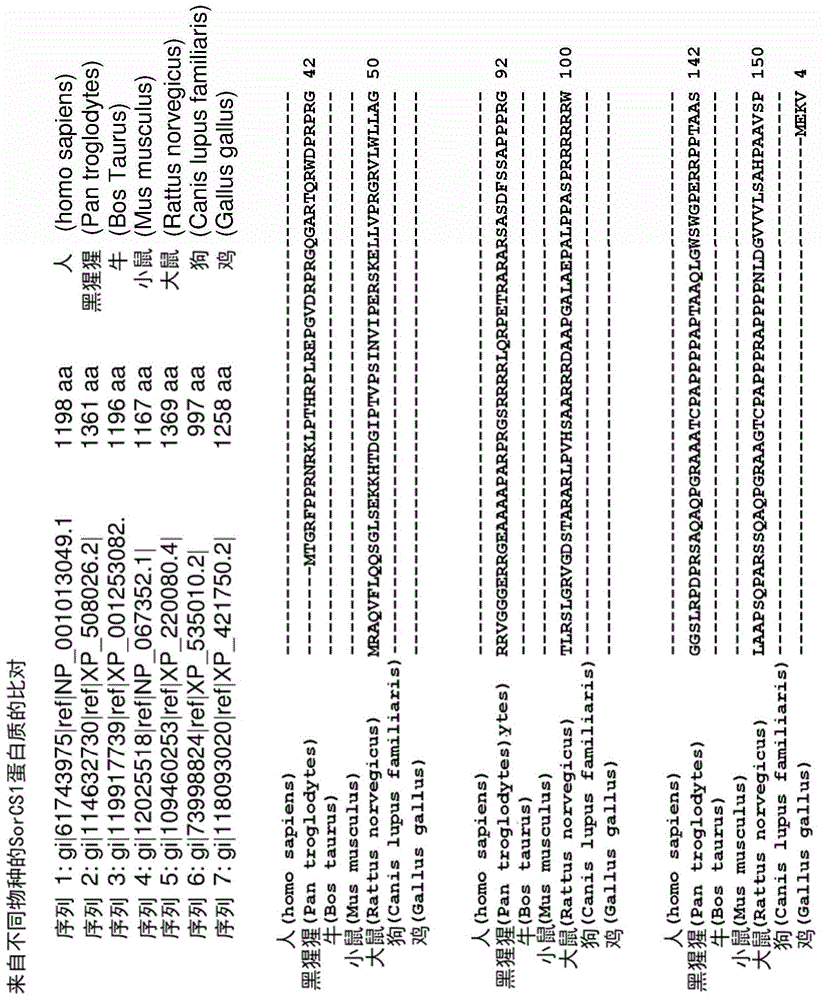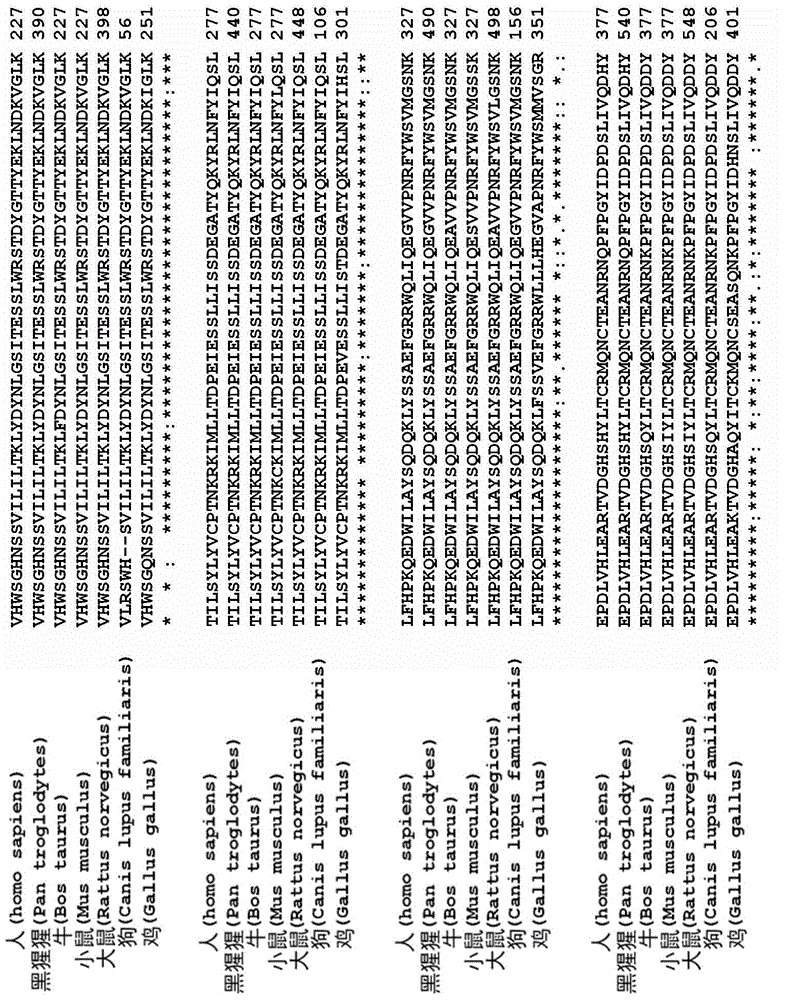SorCS1 for use in the treatment of obesity and overweight
An amino acid and pharmaceutical technology, applied in the application field of SorCS1 in the treatment of obesity and overweight
- Summary
- Abstract
- Description
- Claims
- Application Information
AI Technical Summary
Problems solved by technology
Method used
Image
Examples
Embodiment 1
[0379] Example 1: Gene expression profiling of adipose tissue derived from SorCS1 knockout mice by PCR array
[0380] To examine the gene expression profile of SorCS1 knockout mice, microarray analysis was used to measure the expression of 84 genes related to mouse insulin signaling pathway and 84 genes related to mouse lipoprotein signaling & cholesterol metabolism. Microarray analysis was performed using RNA from adipose tissue of SorCS1 knockout wild-type obese mice. In practice, first-strand cDNA was synthesized from total RNA (Applied Life Systems) in adipose tissue of 50-week-old female mice (n = 3) SorCS1 knockout (- / -) and wild-type (+ / +). Then, superarrays of mouse insulin signaling pathway (PAMM-030A RT2Profiler PCR array) or B) mouse lipoprotein signaling & cholesterol metabolism (PAMM-080-A RT2Profiler PCR array) were prepared using the ABI7900 platform (Applied Life Systems) and SYBR Green / Rox PCR (SA Biosciences) treatment. The expression analysis was done with...
Embodiment 2
[0381] Example 2: Weight loss in diabetic db / db mice after overexpression of soluble SorCS1.
[0382] To assess the effect of soluble SorCS1 on body weight in an obese mouse model that spontaneously develops type 2 diabetes, a db / db mouse strain (BKS.Cg-m+ / +Lpr from Taconic db / BomTac). These mice lack leptin receptors, so the mice become obese and develop insulin resistance and eventually severe diabetes at 6-8 weeks of age.
[0383] Adenovirus expressing human soluble (hsol) SorCS1 or LacZ as a control were injected to examine the effect on weight. A recombinant adenovirus expressing human soluble SorCS1 (hsol.SorCS1) was produced as follows:
[0384] pcDNA3.1 / Zeo(-) / hsol.SorCS1 (amino acid 1-1100) encoding human soluble SorCS1 cDNA was digested with Pme1 and Apa1 and the fragment encoding hsol.SorCS1 was inserted into the shuttle plasmid pVQpacAd5CMVK-NPA (ViraQuest Company, North Liberty, IA). ViraQuest Corporation, North Liberty, IA, then used this shuttle plasmid to ...
Embodiment 3
[0386] Example 3: Reduced food intake and weight in diabetic db / db mice after overexpression of soluble SorCS1.
[0387] To assess the effect of soluble SorCS1 on body weight in an obese mouse model that spontaneously develops type 2 diabetes, a db / db mouse strain (BKS.Cg-m+ / +Lpr from Taconic db / BomTac). These mice lack leptin receptors, so the mice become obese and develop insulin resistance and eventually develop severe diabetes at 6-8 weeks of age. Adenoviruses expressing either hsol.SorCS1 or LacZ as a control (see Example 2) were injected to examine the effect on weight. In detail, 6-week-old db / db female mice were injected with 2E9 pfu of adenovirus vector (from ViraQuest, North Liberty, IA) with hsol.SorCS1 or LacZ as a negative control virus in the tail vein. A) In the morning 9 days after virus treatment, each mouse was transferred to a metabolic cage with the measured amount of food. After 24 hours, the mice were returned to the normal mouse cage and the food in ...
PUM
 Login to View More
Login to View More Abstract
Description
Claims
Application Information
 Login to View More
Login to View More - R&D
- Intellectual Property
- Life Sciences
- Materials
- Tech Scout
- Unparalleled Data Quality
- Higher Quality Content
- 60% Fewer Hallucinations
Browse by: Latest US Patents, China's latest patents, Technical Efficacy Thesaurus, Application Domain, Technology Topic, Popular Technical Reports.
© 2025 PatSnap. All rights reserved.Legal|Privacy policy|Modern Slavery Act Transparency Statement|Sitemap|About US| Contact US: help@patsnap.com



